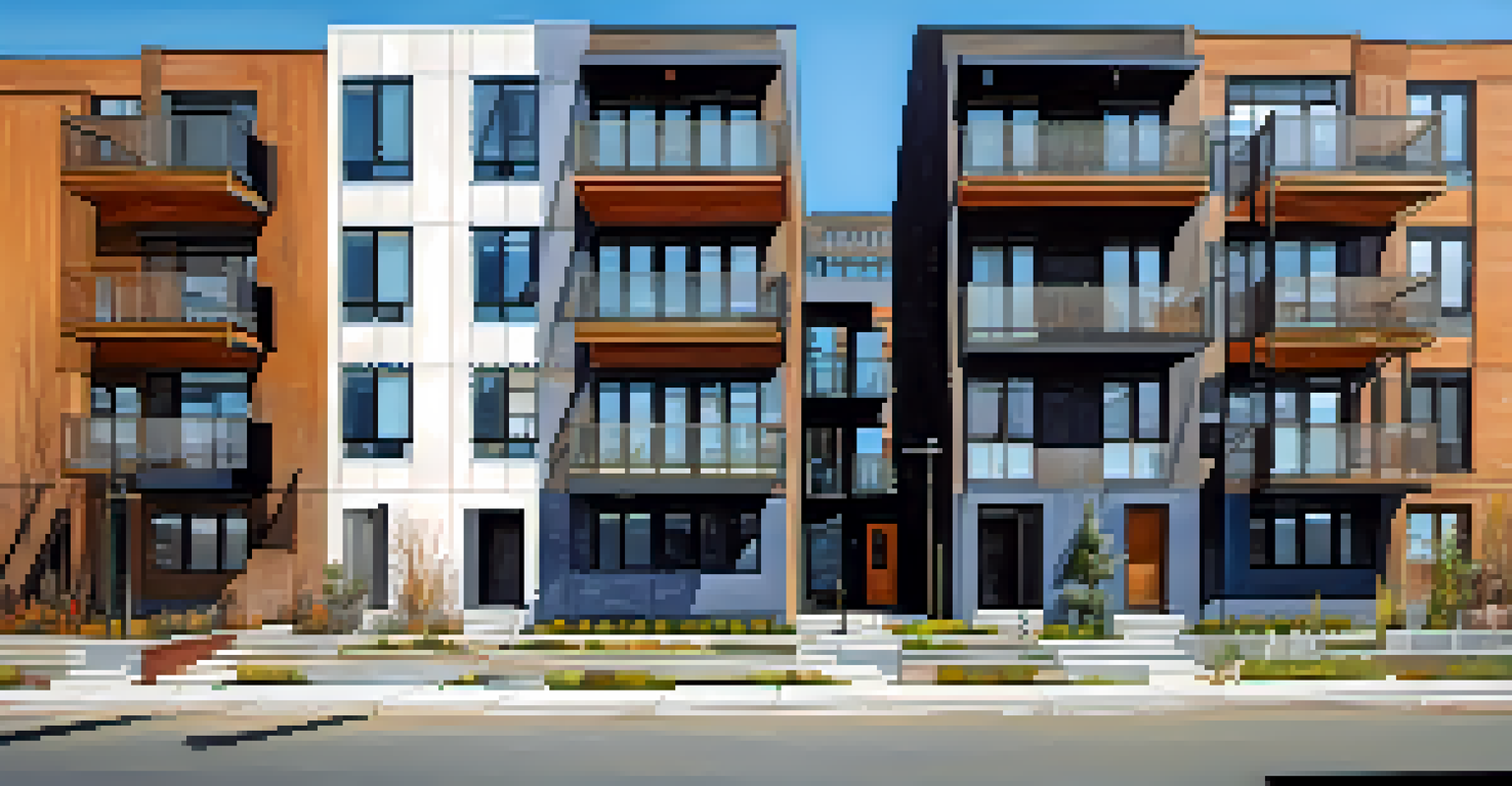Housing Affordability Crisis: Gentrification's Role Explained

Defining the Housing Affordability Crisis in Urban Areas
The housing affordability crisis refers to the increasing difficulty many people face in finding affordable housing. With rising rents and stagnant wages, many individuals and families are feeling the squeeze, particularly in urban areas where housing demand is high. This crisis is not just a local issue; it's a growing concern that affects communities nationwide.
Housing is a basic need. It should be a right, not a privilege.
A common measure of housing affordability is that no more than 30% of a household's income should go towards housing costs. However, in many cities, that percentage is far exceeded, leading to financial strain. As a result, people are forced to make tough choices, such as sacrificing other essentials like healthcare or education to keep a roof over their heads.
Understanding the housing affordability crisis is crucial, as it lays the groundwork for exploring the complex role gentrification plays in exacerbating or alleviating the situation. As we dive deeper, we’ll see how these two issues are interconnected and what they mean for affected communities.
What is Gentrification and Why Does It Happen?
Gentrification is a term used to describe the process in which urban neighborhoods undergo transformation due to an influx of more affluent residents. This often leads to increased property values and living costs, displacing long-term residents who can no longer afford to live there. The phenomenon can be sparked by various factors, including economic development initiatives, infrastructure improvements, and a growing interest in urban living.

As neighborhoods become more desirable, businesses catering to wealthier populations often move in, which can alter the local culture and community dynamics. While gentrification can lead to improved amenities and investment in infrastructure, it also raises significant concerns about the displacement of existing residents and the loss of cultural identity.
Housing Crisis Hits Urban Areas
Many individuals and families struggle to find affordable housing, particularly in urban areas where demand exceeds supply.
The motivations behind gentrification can vary widely, but often, it’s driven by market forces that favor investment in certain areas. By understanding these motivations, we can better grasp how gentrification contributes to the housing affordability crisis.
The Link Between Gentrification and Housing Affordability
Gentrification directly impacts housing affordability by driving up property values and rental costs in previously affordable neighborhoods. As wealthier individuals move in, the demand for housing increases, which can price out lower-income residents. This shift often leads to a cycle where displaced residents are pushed further away from their jobs and support networks, exacerbating the affordability crisis.
Gentrification, in its simplest form, is the transformation of a neighborhood into a more affluent area, which often displaces long-term residents.
In some cases, gentrification can lead to the development of new housing projects that aim to provide more options. However, these developments are frequently marketed at higher price points, further alienating the original community members. Thus, while there may be an influx of investment, the benefits often do not trickle down to those most in need.
Understanding this link is essential for addressing the housing affordability crisis effectively. It raises important questions about how to balance urban development with the needs of existing communities.
Consequences of Displacement Due to Gentrification
The displacement of residents due to gentrification can have profound and lasting consequences on communities. When long-term residents are forced to move, they often lose their social networks and support systems, which can lead to feelings of isolation and instability. This disruption can hinder access to essential services, such as healthcare and education, creating a ripple effect that impacts entire families.
Moreover, the loss of affordable housing options means that more residents are pushed into areas with fewer resources, which can perpetuate cycles of poverty. The cultural fabric of neighborhoods also changes, as long-standing traditions and local businesses may vanish, replaced by new establishments that cater to wealthier clientele.
Gentrification Displaces Residents
As wealthier individuals move into neighborhoods, property values rise, displacing long-term residents who can no longer afford to live there.
Ultimately, understanding the consequences of displacement is critical for policymakers and community leaders. By recognizing these impacts, they can work towards creating more inclusive urban environments that respect and preserve the essence of existing communities.
Potential Solutions to Mitigate Gentrification Effects
Addressing the negative effects of gentrification requires a multifaceted approach that prioritizes community input and long-term planning. One potential solution is the implementation of affordable housing policies, which can include rent control or inclusionary zoning that mandates a certain percentage of new developments be reserved for low-income residents. These strategies can help maintain diversity in neighborhoods.
Community land trusts are another innovative model that allows residents to collectively own land and housing. This approach helps shield them from market fluctuations and keeps housing affordable for future generations. By empowering local residents, communities can foster a sense of ownership and agency over their living environments.
Ultimately, mitigating the effects of gentrification is about finding a balance between development and preservation, ensuring that all community members have a voice in shaping their neighborhoods.
The Role of Policy in Housing Affordability and Gentrification
Policy plays a crucial role in shaping the landscape of housing affordability and gentrification. Local governments have the power to enact measures that either exacerbate or alleviate these issues. For instance, zoning laws can dictate the types of developments allowed in certain areas, influencing the pace and nature of gentrification.
Furthermore, investment in public transportation and infrastructure can support the need for affordable housing in areas experiencing gentrification. Cities that prioritize equitable development can help ensure that all residents benefit from urban renewal efforts, rather than being pushed out in favor of wealthier newcomers.
Community Action Against Gentrification
Grassroots movements play a crucial role in advocating for affordable housing and tenant rights, empowering residents to influence local policies.
As we examine the role of policy, it becomes clear that thoughtful and inclusive decision-making is essential for fostering sustainable urban growth while protecting vulnerable communities.
Community Initiatives: Grassroots Movements Against Gentrification
Grassroots movements have emerged as powerful forces in combating the negative effects of gentrification. These community-led initiatives often focus on protecting affordable housing, advocating for tenant rights, and preserving the cultural heritage of neighborhoods. By mobilizing residents and garnering support, these movements can create significant change at the local level.
For example, neighborhood associations and coalitions can organize campaigns to raise awareness about the importance of affordable housing and the rights of renters. They can also push for policy changes and hold local governments accountable to ensure that the needs of all community members are considered.

Ultimately, grassroots movements highlight the importance of community engagement in addressing the complexities of gentrification. By empowering residents to take an active role in shaping their neighborhoods, these initiatives can foster resilience and promote lasting change.